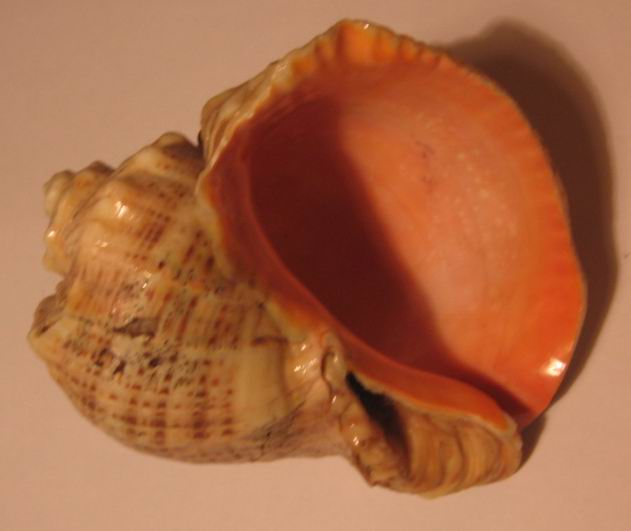- Veined rapa whelk
Taxobox
color = pink
name = Veined rapa whelk

image_caption =
image_width = 300px
regnum =Animal ia
phylum =Mollusca
classis =Gastropod a
subclassis =Orthogastropoda
ordo =Caenogastropoda
suborder =Sorbeoconcha
superfamilia =Muricoidea
familia =Muricidae
genus =Rapana
species = "R. venosa"
binomial = "Rapana venosa"
binomial_authority = Valenciennes,1846 The veined rapa whelk, "Rapana venosa", is a
species of largepredatory seasnail , a marinegastropod mollusk orwhelk , in the familyMuricidae , the rock shells.This large sea snail has become an invasive species in many different localities around the worldDistribution
This species is native to the
Sea of Japan area: theEast China Sea , theBohai Sea and theYellow Sea .As an invasive species
It appears to be the case that the spread of this species outside its natural range has been made possible by the larval stage being transported along with
ballast water in the hulls of ships.Rapa whelks were first found in the
Black Sea in the 1940s. Within a decade this mollusk had spread along the Caucasian andCrimea n coasts and moved into theSea of Azov . From 1959 to 1972, its range extended into the northwest Black Sea to the coastlines ofRomania ,Bulgaria andTurkey [http://cars.er.usgs.gov/Nonindigenous_Species/Rapa_whelk/rapa_whelk.html] .Rapas have also become established in the Adriatic and Aegean seas.
They have been found at at least one location along the southeast coast of
South America .In the
United States the first specimen discovered was in August 1998 by members of the Virginia Institute of Marine Science (VIMS) Trawl Survey Group inHampton Roads ,Virginia [http://cars.er.usgs.gov/Nonindigenous_Species/Rapa_whelk/rapa_whelk.html] . In the lowerChesapeake Bay of the easternUnited States adult specimens as well as egg cases are continually being reported.Reasons for the survival of this invasive species
The thick strong shell of the rapa whelk is arguably its strongest advantage over native whelks, because rapas can easily prey on local whelks, whereas local whelks are unable to successfully attack rapas. The thick shell also means that predators such as sea turtles are unable to feed on the invasive species, and can only feed on local whelk populations. Once the rapa whelk reaches adulthood, it exists unchecked in the local population, and can consume and reproduce freely.
Wikimedia Foundation. 2010.
